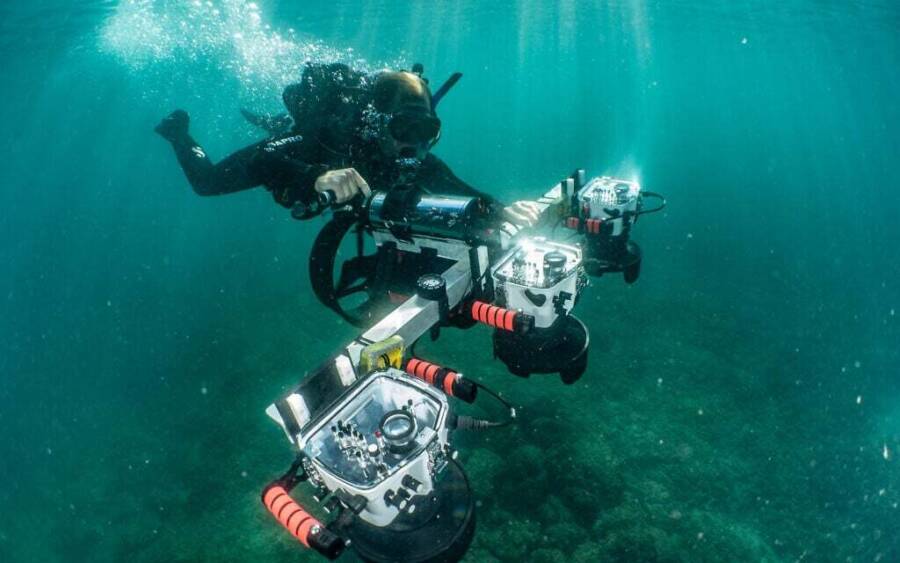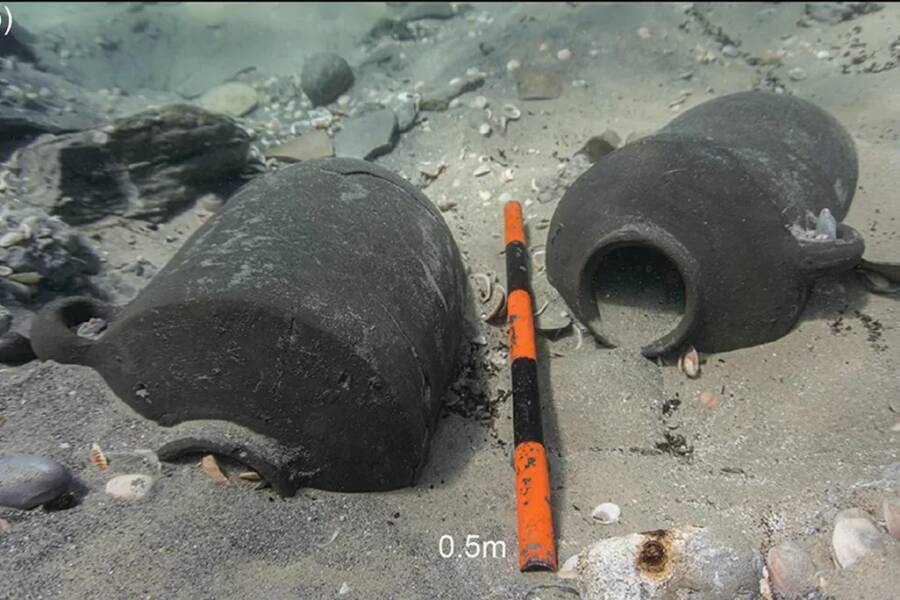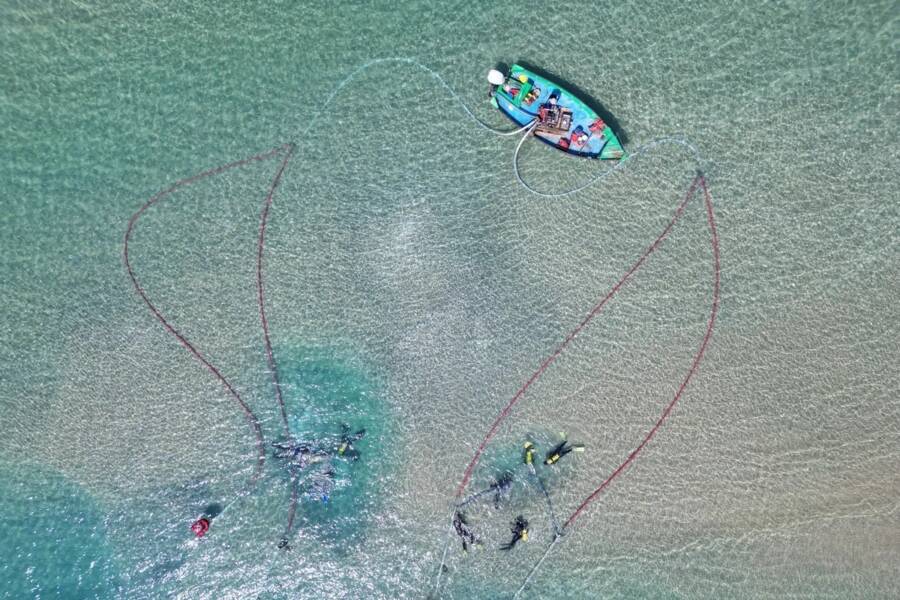Divers at Tantura Lagoon have uncovered three shipwrecks, the oldest of which dates back 3,000 years — and they were filled with containers like bowls, jars, and amphorae as well as food like grapes and dates.

Amir Yurman/University of HaifaArchaeologists recently uncovered three Iron Age shipwrecks in Israel’s Tantura Lagoon, famous for its many sunken vessels dating back to antiquity.
Archaeologists have discovered three Iron Age shipwrecks off the coast of Israel, and their cargo has reshaped experts’ understanding of ancient trade across the Mediterranean.
The wrecks were found in Tantura Lagoon, also known as Dor Lagoon, near the ancient harbor city of Dor. This is the first discovery of sunken cargo within a former port city in Israel and it provides deeper insight into Iron Age trade than pre-existing land-based evidence.
Furthermore, these three shipwrecks, separated by several centuries, illuminate different periods of trade across the Iron Age.
The Three Ancient Shipwrecks Recently Found In Israel’s Tantura Lagoon

A. Yasur-Landau et al./AntiquitySome of the cargo that archaeologists found included storage jars like these.
A new paper published in the journal Antiquity describes how the project, carried out by the University of California San Diego in conjunction with the University of Haifa, used both traditional methods of research alongside newer techniques. Archaeologists used 3D modeling, multispectral imaging, and digital mapping to examine the wrecks and surrounding waters throughout 2023 and 2024.
In all, the team was able to explore three shipwrecks laden with vast amounts of cargo at a sandbar near Dor.
The oldest shipwreck, named Dor M, dates back to the 11th century B.C.E. Archaeologists found storage jars and an anchor with a Cypro-Minoan inscription, suggesting a commercial connection between Cyprus and Egypt.
This discovery is backed up by historical accounts of Egyptian maritime trade during this period. The Report of Wenamun, an Egyptian literary text from about 1000 B.C.E., describes voyages to Dor during this time.
The second-oldest shipwreck, dubbed Dor L1, contained Phoenician jars and thin-walled bowls that place the wreck somewhere in the late 9th or early 8th century B.C.E. This cargo lacks any connection to Egypt, coinciding with land-based evidence suggesting that trade between Dor and Egypt began to decline at that time.
The shipwreck known as Dor L2 is the youngest of the three. Dated to the late 7th or early 6th century B.C.E., it contains the most complete cargo of the newly-discovered shipwrecks.
At this time, Dor was likely a bustling trade hub under the control of the Babylonian or Assyrian empire, which was reflected in the contents of its cargo. The cargo featured finds like Cypriot-style, basket-handle amphorae, and porous masses of metallic iron and slag called iron blossoms, which were part of the iron smelting process.
Continued Exploration Of Mediterranean History During The Iron Age

Marko RunjajicAn aerial view of divers exploring the shipwrecks of the Tantura Lagoon.
The cargo from all three of these shipwrecks sheds light on trade networks and economic connections across the Mediterranean throughout the Iron Age. Primarily, it highlights how certain avenues of trade ebbed and flowed as changes in regional politics occurred.
While these sunken ships and their cargo provide more insight into this tumultuous period, archaeologists are expecting to discover even more as they continue to excavate this sandbar. More specifically, they expect to find more from Dor L2, whose hull is still buried beneath the sand.
In carrying out further exploration, these researchers will continue to make use of their state-of-the-art procedures, which notably include both traditional underwater excavation and cutting edge cyber-archaeology methods. For instance, the team used 3D modeling, multispectral imaging, and digital mapping to help reconstruct these newly-found ships and their cargo.
The archaeologists working on this project believe that the new discoveries are just the beginning and that more wrecks and artifacts will be uncovered. So far, 26 shipwrecks have been found in Tantura Lagoon, which long had a dangerous reputation among seafarers due to its shallow waters, islets, and rocks. And to date, only a quarter of the lagoon has been excavated.
After reading about the three Iron Age shipwrecks uncovered in Israel, see the six historic shipwrecks found in Sweden. Then, learn about the 10 shipwrecks spanning 5,000 years unearthed in Greece.





